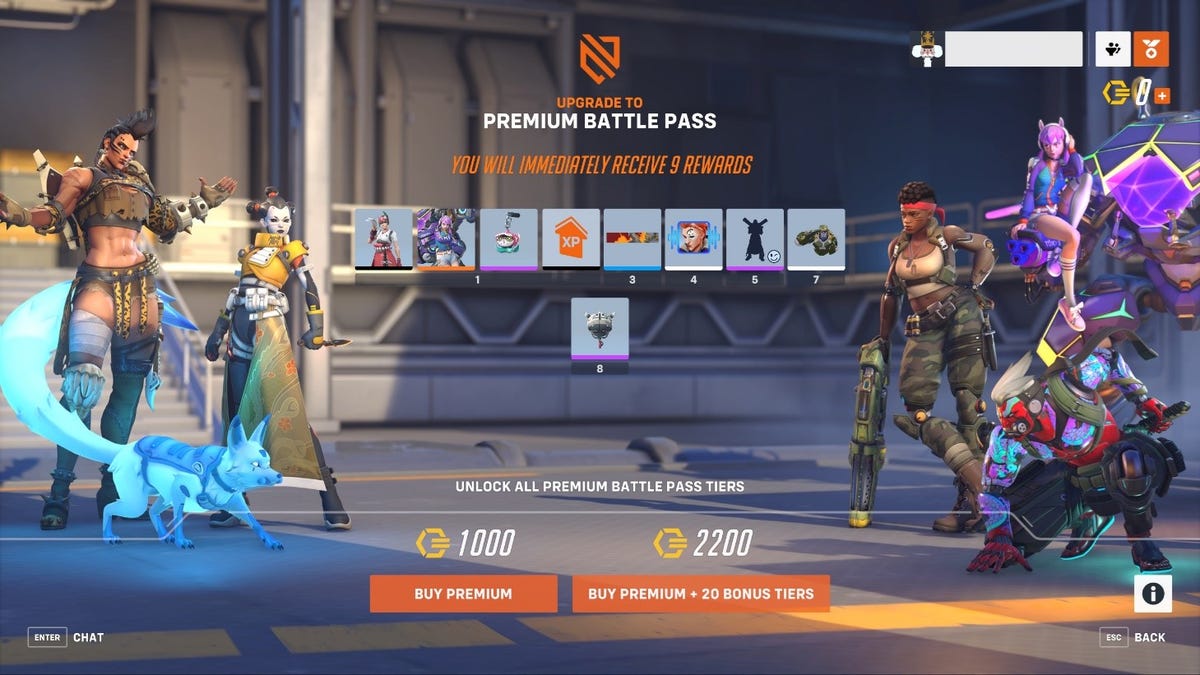
It’s the same gameplay, with 95 percent of the same characters—albeit with a few getting reworked to accommodate the smaller team sizes. (R.I.P. Orisa’s holo-shield; our turtle tactics will miss you.) It’s the same basic art, with a few tweaks. It’s the same highs and lows, that feeling of disparate abilities coming together to achieve something all-powerful, or the sense of getting stomped because you and the randos you got teamed up with could never make it click. The characters remain brightly drawn (if, uh, still questionably designed), with power-sets that are still some of the most thoughtful in the entire class-based gaming sphere. (Also persisting: The moral weirdness of giving even an iota of support to Activision Blizzard after all its recent HR issues.)
Advertisement
In every meaningful way, Overwatch 2 is Overwatch, the same game we’ve been dipping in and out of since way back in 2016. Even the vaunted battle pass is same-y as hell, filled as it is with the same old cosmetics, and a whole host of original Overwatch heroes for new players to resurrect from the dust. (People who shelled out actual money for the first game are grandfathered in to those unlocks, thankfully.) What we have here, then, is not an innovation in video game design, but video game marketing. After all, if games are going to become these permanent institutions—steadily updating, retaining as many players as they can for years at a time—then why should they have to also give up the flashy appeal of coming out with something new and fresh with a 2 in the name? (Even if the actual offerings are decidedly warmed over.) It’s a triumph, honestly—just not in a way that’s actually going to mean much to actual players.